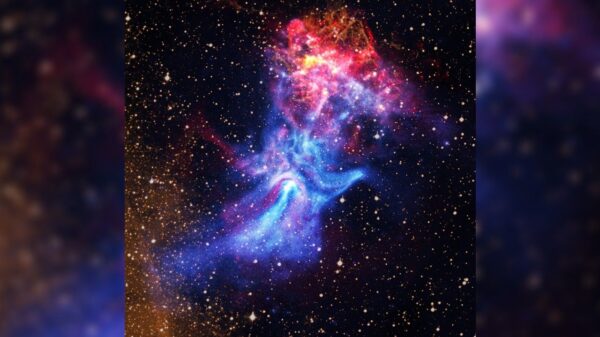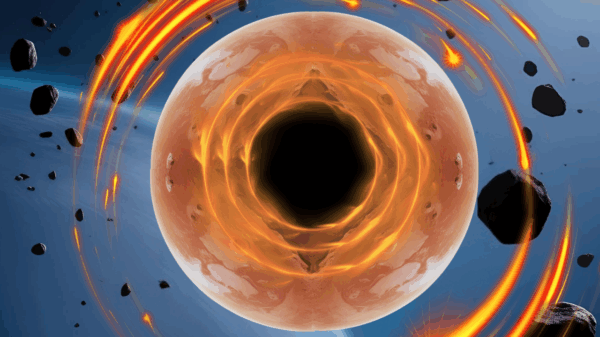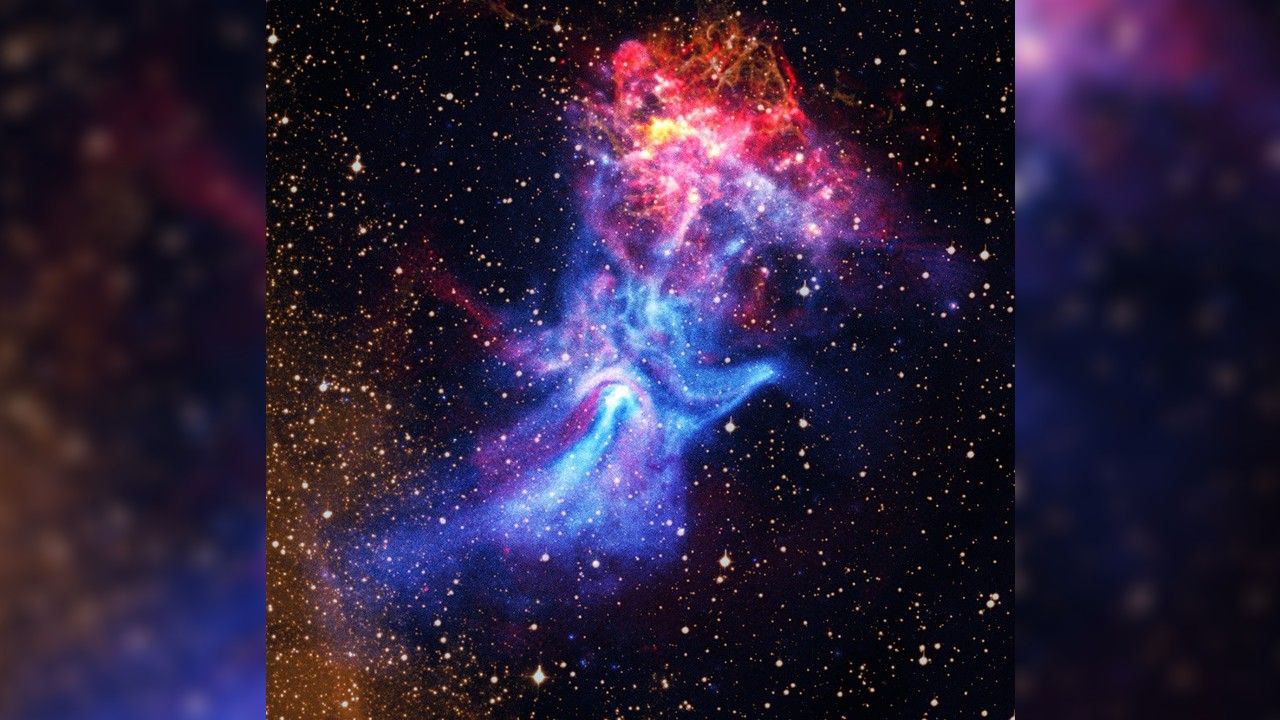A new composite image of a nebula known as MSH 15-52 showcases a striking hand-like structure formed from the remnants of a massive stellar explosion. The vivid display results from the powerful pulsar B1509-58, a rapidly spinning neutron star with a diameter of approximately 12 miles (20 kilometers). This celestial phenomenon has sparked interest among astronomers as it reveals the dynamic processes following a supernova, specifically the one that created the pulsar at the heart of the image.
Using data from the Australia Telescope Compact Array (ATCA) and X-ray observations from NASA’s Chandra X-ray Observatory, researchers have crafted a fresh perspective on the nebula, which extends over 150 light-years. The combination of radio and X-ray data has allowed scientists to visualize the intricate details of this cosmic structure, resembling a human hand reaching towards the remnants of the supernova, identified as RCW 89.
Exploring the Cosmic Hand
The central object, pulsar B1509-58, formed when a massive star exhausted its nuclear fuel, leading to a catastrophic collapse and subsequent supernova explosion. Pulsar B1509-58 spins nearly seven times per second and possesses a magnetic field approximately 15 trillion times stronger than that of Earth. Despite its compact size, it acts as a cosmic dynamo, accelerating particles to extreme energies and generating winds that shape the nebula into its distinctive hand-like form.
The newly released image displays the system in a spectrum of colors: radio emissions from ATCA shine in red, while Chandra’s X-ray data appears in blue, orange, and yellow hues. Optical data revealing hydrogen gas is depicted in gold. The overlap between radio and X-ray emissions produces a striking purple, highlighting regions where the pulsar’s wind interacts with the remnants of the stellar explosion.
Recent radio observations have uncovered delicate filaments that align with magnetic fields. These features likely result from the pulsar’s wind colliding with debris left over from the supernova.
Unraveling Cosmic Mysteries
Significantly, some of the most prominent X-ray features, such as a jet near the pulsar and the bright “fingers” extending outward, lack corresponding radio signals. Astronomers speculate that these areas may consist of streams of energetic particles escaping along magnetic field lines, similar to shockwaves created by supersonic aircraft.
Nearby, the supernova remnant RCW 89 adds further complexity to the study. Its uneven radio glow overlaps with clumps observable in X-ray and optical wavelengths, suggesting interactions with a dense hydrogen gas cloud. Intriguingly, a sharp boundary in the X-ray data, believed to indicate the expanding blast wave from the supernova, shows no radio emissions—a surprising finding for a young remnant.
The combined observations of MSH 15-52 and RCW 89 continue to fascinate astronomers, as they present new clues about the interplay between pulsars and supernova debris. While the latest image provides valuable insights, researchers emphasize that additional studies are essential to fully comprehend the mechanisms behind the formation and evolution of these remarkable cosmic structures.
The findings, based on high-resolution radio observations of MSH 15-52 and RCW 89, were published on August 20, 2023, in the Astrophysical Journal.
































































